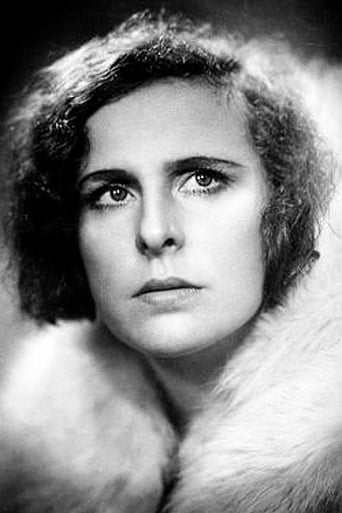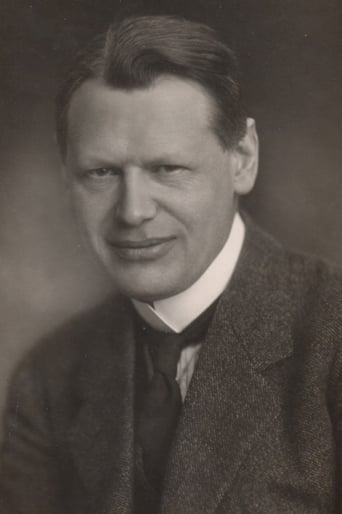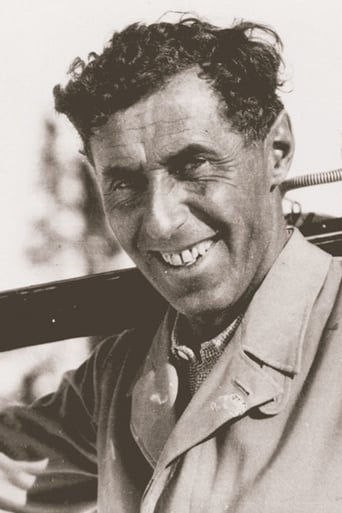Plantiana
Yawn. Poorly Filmed Snooze Fest.
Artivels
Undescribable Perfection
Mjeteconer
Just perfect...
Marva
It is an exhilarating, distressing, funny and profound film, with one of the more memorable film scores in years,
JohnHowardReid
I was really looking forward to the Kino DVD of The Holy Mountain (1926) which I assumed would feature the original music score by Edmund Meisel. Instead of the grandeur of Meisel, however, Kino treats us to a monotonous, half-baked and often totally inappropriate offering from Aljoscha Zimmerman. Admittedly, even Meisel may have found it difficult to set Leni Reifenstahl's repetitive posturing (you couldn't call it "dancing") to music, but even a dim reflection of the stark, deadly beauty of the Swiss and Bavarian Alps should have been possible. Not so, however. The score manages to undermine the luster of everything it touches. An oft-told noirish tale of a love triangle twisted to the point of dementia, The Holy Mountain serves not only as a scenic backdrop but as a murderous participant. (The Kino DVD rates 10/10 for its superlative preservation of the original's color-tinted photography, but somewhat less for the failure of its music score).
Horst in Translation (filmreviews@web.de)
"Der heilige Berg" or "The Holy Mountain" is a German silent film in black-and-white from the year 1926, so this one has its 90th anniversary this year already. It was written and directed by German filmmaker Arnold Fanck, a man who is mostly known for his mountain-themed films from the first half of the 20th century. The cast includes Ernst Petersen, a regular in Fanck's films, Leni Riefenstahl before her days as a propaganda filmmaker, and Luis Trenker, a famous mountain climber who turned to acting. The film runs for 100 minutes approximately, but I have to say that in terms of the story and the plot 50 minutes would have been more than enough. The story is not the greatest strength here about a pair of climbers and a woman who stands between them, but this is a common problem with Fanck's works. However, his biggest strength also keeps this film from being a really boring or disastrous watch. Visually, it is way ahead of its time, no doubt about it. The snowy landscapes are a joy to watch and I can see why this film still appeals to people today. There are some genuinely beautiful shots in here. However, this is not enough to make up for the deficits in terms of story-telling and my overall verdict for this movie from between World Wars I and II is a negative one. Thumbs down and I do not recommend the watch. The good thing for foreign audiences is that this film also exists with English intertitles if they really want to see it. But I cannot really support this decision.
MartinHafer
If you haven't seen all of Leni Riefenstahl's 'rock and snow' epics, then you might be inclined to like this one a lot more than me. However, I have seen them and after you've seen a couple, they tend to be VERY repetitive. On top of that, this film suffers from some seriously bad acting--so bad that it often overshadows the great cinematography.Today, few would remember Leni Riefenstahl, but if they did, they'd probably only remember her as a director of the massive love letter to Hitler "Triumph of the Will". However, before she began directing, Riefenstahl was a huge film star in Germany and specialized in films made in the Alps. They must have been popular, because they made so many. Some of them are really amazing--some not. What you need to acknowledge, though, is that they were extremely difficult movies to film and had many hair-raising climbing scenes.The film begins with two people. One is a child of nature (Riefenstahl) who dances about the shores and loves the valleys. She meets a man whose interests lie in the great heights of the mountains and he revels in the snow. Can these two people find love without some disaster befalling them? Well, if you ask the old lady in the film, she'll scream a definite NO--since, I assume, she'd read the screenplay. And, not surprisingly, disaster does occur--though Leni has nothing directly to do with it. I'd say more about the plot, but don't want to ruin it.My biggest problem with the film is the direction given to Riefenstahl. During much of the film, she hops about in a diaphanous dress--dancing for no apparent reason. It's very artsy....but weird. And, when she emotes, she REAAALLY emotes!! Even compared to the over-emoting of the earlier 20th century silents, she's over-emoting--to the point of ridiculousness. Now I know she was a very good actress and have liked her other films--but here she simply is told to overdo it and she comes off very poorly. Not a terrible film but a poorly directed one in all of her scenes. As for the climbing and skiing portions, it's breathtaking.
FerdinandVonGalitzien
After a scene in Herr Wilhelm Prager's "Wege Zu Kraft Und Schönheit" (1925), "Der Heiliger Berg" was the first film of Dame Leni Riefenstahl as a lead actress. It was a film written exclusively for her by Herr Arnold Fanck according to Dame Riefenstahl memoirs, a book that includes other partial and conceited memories… from a time in the mid-20s when she was a famous dancer.The film includes a prologue in where we can see Dame Riefenstahl dancing or something like that, well… knowing that Germans, even the aristocrats, had a particular sense of rhythm more suited to military parades with plenty of goose steps, you will be able to understand the reason why Dame Riefenstahl was a famous dancer during the Weimar era.Herr Arnold Fanck, as a director was noted as the creator of one of the most successful and peculiar German film genres: the mountain films. (Actually, Herr Fanck was a famous director at that time thanks to mountain documentaries; "Der Heilige Berg" was his first film that includes a plot). In these films nature and its consequences are always centred on the lead character of these beautiful films with their superb cinematography and vigorous editing. Men and women have to fight against the savage elements in what it is finally an unequal and difficult battle. That's the most important aspect of the film, those incredible beautiful nature shots because Dame Riefenstahl as a dancer/actress or Herr Trenker (the male lead actor) as an actor are not very impressive, or…in the strict German sense, they are depressive."Der Heilige Berg" shows different nature's conditions and contradictions. In the first part of the film, our heroine, Diotima the dancer, is immersed in bucolic, idealized and calm mountain landscapes full of flowers, shepherds, people skiing and all that kind of strange things. In the second part of the film the beautiful mountain landscapes will transform to a dangerous and inaccessible place in which the snowfalls and avalanches will prevent the rescue of two of Diotima's lovers who are isolated at the mountaintops. In many occasions during the film, some scenes are prolonged unnecessarily due to the excessive emphasis on mountain scenery that Herr Fanck wanted; duplicate shots diminish the film's action in a Herr Trenker oeuvre whose inner intention is to be a tribute to nature and the Teutonic mountains.And now, if you'll allow me, I must temporarily take my leave because this German Count must to climb the aristocratic ladder.Herr Graf Ferdinand Von Galitzien http://ferdinandvongalitzien.blogspot.com/




